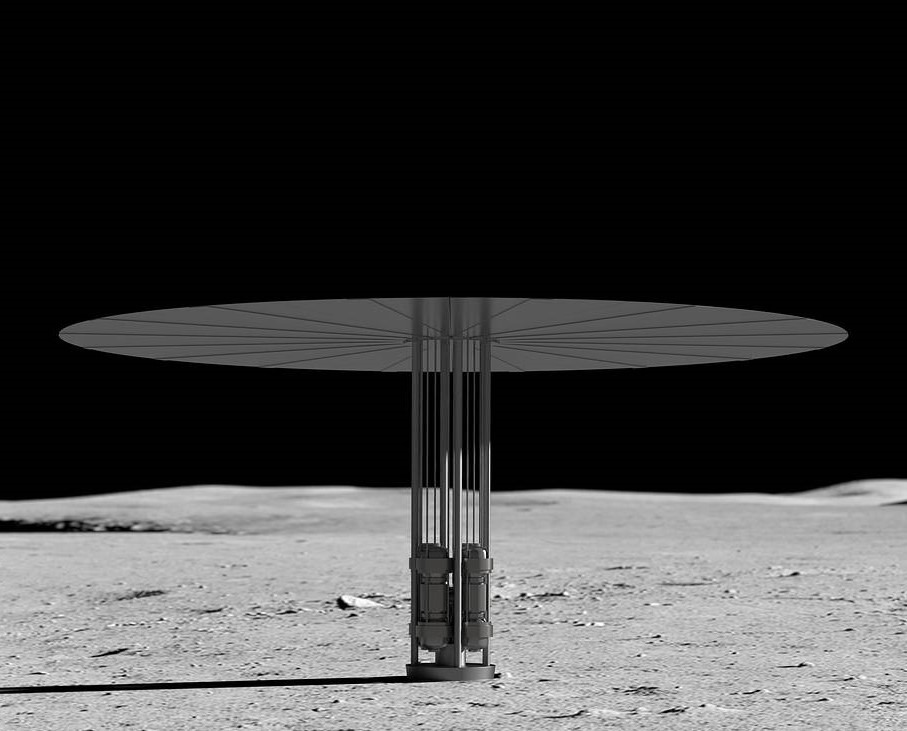Do we need highly enriched uranium in space (again)?
By Christopher Fichtlscherer | September 12, 2019

When Neil Armstrong and Buzz Aldrin planted the US flag on the moon 1969, the event not only marked the birth of a new generation of colonizers, but also became a general symbol of US superiority. Space exploration is an impressive demonstration of technological capabilities, and beyond that, a demonstration of state power.
After a long pause over the last few decades, today again many countries are racing to get to the moon. In January 2019, the Chinese Chang’e-4 crewless moon mission became the first ever to land on the far side of the moon, and China plans to build a moon base within about 10 years to aid further space exploration and colonization. Moreover, Israel and India have ambitious plans to reach the moon, though both countries’ crewless moon missions in 2019 failed.
Not to be outdone, the United States is reinforcing its efforts to return to the moon. While Barack Obama’s view of reviving crewed moon missions was that “we’ve been there,” the Trump administration has chosen another path. In his March 2019 speech to NASA, Vice President Mike Pence proposed a five-year deadline for getting the next American on the moon—a time frame that would perfectly coincide with the end of a possible second term of the Trump administration. NASA administrator Jim Bridenstine has gone even further: “This time, when we go to the moon, we’re going to stay,” and the next step would be to send humans to Mars by 2033.
Weapon-grade fuel for the Mars mission. In this rush to realize the old dream of space colonization, a central question is how to provide a planetary base with electrical power. Currently it seems as though NASA is in favor of nuclear energy. Most recently, on August 20, 2019, President Trump issued a presidential memorandum authorizing the possible launch into space of nuclear reactors fueled by highly enriched uranium (HEU) for “orbital and planetary surface activities.” But sending HEU reactors into space is risky and unnecessary because there are viable options for using low-enriched uranium (LEU), or for avoiding nuclear power altogether by harnessing solar energy.
Since 2015, NASA has funded a group at Los Alamos National Laboratory to build what is called the Kilopower reactor, a nuclear fission reactor for space applications. The Kilopower reactor is a sodium-cooled fast-neutron reactor with a block core that produces electrical energy with Stirling engine heat converters. NASA plans to build four or five Kilopower reactors, each with a lifetime of 12 to 15 years and a continuous energy output of 10 kilowatts, which could meet the energy needs of a possible Mars base. This Kilopower fast reactor could be fueled with either LEU or HEU. While the LEU fuel for the Kilopower reactor would contain 19.75 percent uranium 235, the HEU fuel would contain 93 percent of this isotope, a degree of enrichment that is called “weapon-grade.” In the newest prototype, these two versions of the fast reactor have essentially the same design but differ by size and weight. Los Alamos published a white paper about the Kilopower reactor in August 2017 supporting the LEU designs, but half a year later the lab successfully tested the HEU design. In October 2018, Los Alamos published a second white paper that favored HEU on the grounds that it would have a lighter weight.
Indeed, the HEU version of the Kilopower reactor is lighter, but it comes with alarming risks: the block fuel element contains around 43 kilograms of HEU, enough material for a terrorist group to build a nuclear weapon. There is also a proliferation risk. Kilopower would establish a precedent that other states could use to justify their own production of weapon-grade uranium. That is why, over the last four decades, the United States has led an international effort to persuade research reactor operators to switch from using HEU to using LEU. Building an HEU-fueled space reactor would undermine those attempts and the nonproliferation policies that inform them.
There are other downsides beyond the security risks. For example, the use of HEU would exclude private industry from taking part in space-reactor research and development. Such a reactor would also be more expensive than the LEU version because of the high costs required to secure significant quantities of HEU during the development and the launch. Finally, an HEU reactor would be sure to stir controversy for the reasons mentioned above and would be subject to cancellation by Congress.
Beyond that, the main advantage of the HEU reactor may not actually be much of an advantage. In 2015 scientists from the Korea Atomic Energy Research Institute, and in 2018 scientists from the Colorado School of Mines, each published designs for different, lighter LEU reactor models with a similar power output to the Kilopower LEU version. Moreover, it seems realistic that we can expect further weight and launching cost reductions well before a Mars colonization mission could start.
Accident risks. Sending nuclear reactors into space is not a new idea. The Soviet Union launched over 30 into orbit during the Cold War to power radars that tracked the US Navy. The United States launched only one reactor, in 1965. Dubbed the SNAP-10A, it had to be shut down after only 43 days due to an electrical component failure.
Most of these reactors are still orbiting above us—but not all of them. For example, the Soviet Kosmos 954 reactor crashed to earth in 1978, spreading radioactive material over a large area of northern Canada. In total there is about one ton of nuclear material in orbit, and all of it is at risk of colliding with other space debris and coming back to earth.
Major accidents have occurred in over 20 percent of space reactor missions. That is probably one of the reasons why no country has launched a reactor into space since the Cold War. Given these issues, why not avoid radioactive material for space missions altogether? Perhaps solar energy should be the first choice for electrical energy in space. Most satellites launched into space get their energy from solar panels, as does the international space station, which has successfully operated for over 10 years with solar arrays that produce up to 120 kilowatts of electricity. The NASA Mars rover Opportunity ran for over 14 years powered by solar panels. In short, the difficulties of running a solar power system on Mars seem manageable.
If we really want to build a Mars base in the not-so-distant future, why should we go with weapon-grade uranium, with all its security and proliferation risks, when we have both the option of affordable alternative LEU designs and solar options that eliminate these risks?
Together, we make the world safer.
The Bulletin elevates expert voices above the noise. But as an independent nonprofit organization, our operations depend on the support of readers like you. Help us continue to deliver quality journalism that holds leaders accountable. Your support of our work at any level is important. In return, we promise our coverage will be understandable, influential, vigilant, solution-oriented, and fair-minded. Together we can make a difference.
Keywords: Kilopower reactor, Mars, highly enriched uranium, nuclear reactor, space
Topics: Nuclear Risk, Opinion
















I definitely agree with you in how LEU is better than HEU, but nuclear reactors are better than solar panels in many ways. While you can use solar panels for low-energy applications, such as the Opportunity rover, it really doesn’t scale well for higher energy stuff like human colonies or types of efficient engines (eg. MPDs and Ion engines). Also, solar panels have a bunch of difficulties while on a planet. They’re really delicate, which makes them not so great on a planet. Also, look at how the Opportunity rover died. Dust storms make solar panels essentially worthless and given… Read more »
“The NASA Mars rover Opportunity ran for over 14 years powered by solar panels. In short, the difficulties of running a solar power system on Mars seem manageable.“
“Ran … 14 years” is not quite right, is it? Opportunity shut down all operations every night (longer in dust storms), essentially freezing and dying every evening. So, no that’s not manageable for manned exploration.